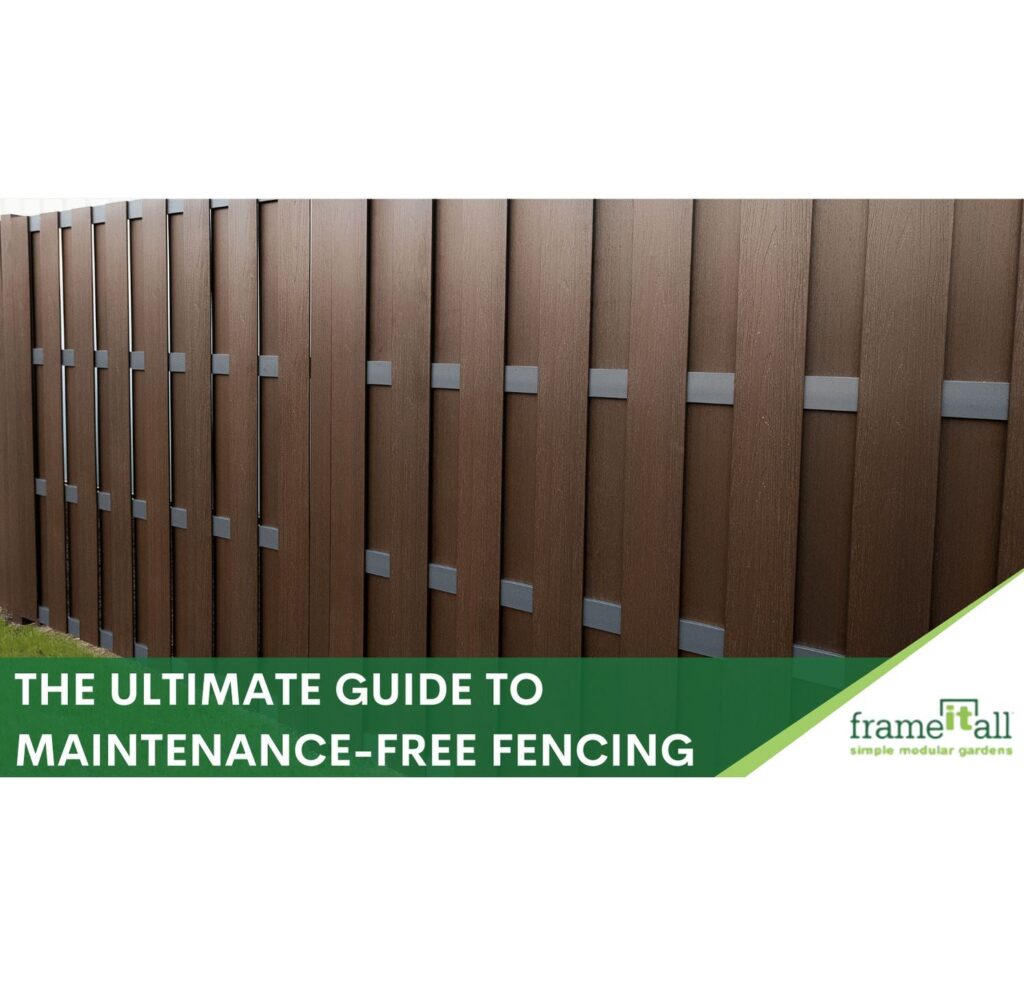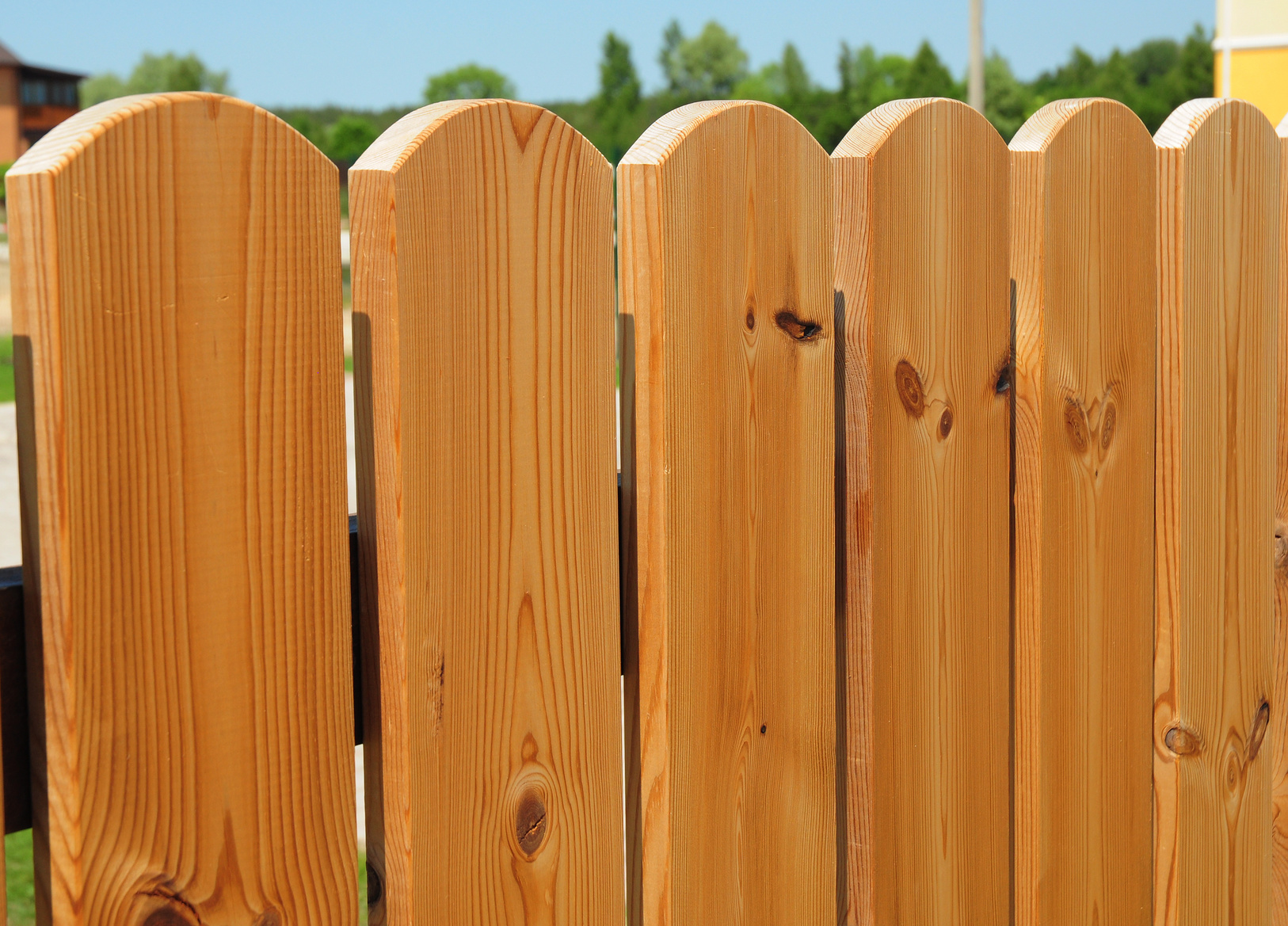Welcome to the world of fences! In this article, we’ll be exploring the ins and outs of different fence types, their varying sizes and shapes, the materials used in their construction, and most importantly, how to determine which type of fence is suitable for your specific needs or requirements. Whether you’re looking to enhance privacy, ensure security, enclose a backyard, or add decorative elements to your property, we’ll dive into the characteristics and advantages of various fence types such as wooden fences, chain-link fences, vinyl fences, metal fences, and more. Along the way, we’ll address common questions about fence maintenance, durability, and aesthetic appeal, helping you make informed decisions when selecting and installing fences. So let’s get started on our journey to understand the maintenance requirements of different fence types!
Wooden Fences
Introduction
Wooden fences are a popular choice for homeowners due to their timeless and versatile appeal. They add a natural and rustic touch to any property, blending seamlessly with various architectural styles. Wooden fences offer both privacy and security while enhancing the overall aesthetic of your outdoor space. They are available in different styles, including picket fences, lattice fences, and privacy fences, allowing you to choose the one that best suits your needs and preferences.
Maintenance Requirements
Wooden fences require regular maintenance to ensure their longevity and visual appeal. Here are some maintenance tasks you should consider:
Cleaning
It is essential to clean your wooden fence regularly to remove dirt, dust, and debris. You can use a mild detergent mixed with water and a scrub brush to gently clean the surface. Avoid using harsh chemicals that can cause damage to the wood. Rinse the fence thoroughly with water after cleaning.
Painting/Staining
To protect the wood from weather elements, it is recommended to paint or stain your wooden fence. This helps prevent rotting, warping, and discoloration. Choose a high-quality paint or stain specifically designed for outdoor use. Before applying, ensure that the fence is clean and dry. Follow the manufacturer’s instructions for the application process.
Repairing Damages
Regularly inspect your wooden fence for any damages, such as loose boards, rot, or termite infestation. Replace any damaged or rotting wood promptly to prevent further deterioration. If you notice signs of termite activity, consult a professional for appropriate treatment options.
Here are the 10 most common questions people ask about wooden fences:
- How long does a wooden fence typically last?
- Can I install a wooden fence myself, or do I need professional help?
- What type of wood is best for a wooden fence?
- How often should I paint or stain my wooden fence?
- Are there any eco-friendly options for wooden fences?
- Can I install a gate in my wooden fence?
- How do I prevent my wooden fence from warping?
- What should I do if my wooden fence gets damaged in a storm?
- Are there any regulations or permits I need to consider before installing a wooden fence?
- What are some alternative materials to wood for a fence?
Chain-Link Fences
Introduction
Chain-link fences are known for their durability, affordability, and low maintenance requirements. They consist of several interlocking metal wires woven together to form a diamond pattern. Chain-link fences are commonly used in residential, commercial, and industrial settings. They provide security and boundary delineation without obstructing the view.
Maintenance Requirements
While chain-link fences are relatively low maintenance, there are a few maintenance tasks to keep in mind:
Cleaning
Periodically clean your chain-link fence to remove dirt, dust, and debris. Use a hose or pressure washer to rinse off any built-up grime. Avoid using abrasive tools or harsh chemicals that can damage the fence’s coating.
Repairing Damages
Inspect your chain-link fence for any damages, such as bent wires, loose posts, or rust spots. These issues can compromise the integrity of the fence. Replace or repair any damaged components to ensure the fence remains secure.
Here are the 10 most common questions people ask about chain-link fences:
- Can I add privacy slats to a chain-link fence?
- How tall can a chain-link fence be?
- Are there any regulations regarding the installation of chain-link fences in residential areas?
- Can I attach plants or vines to a chain-link fence?
- How long does a chain-link fence typically last?
- Are chain-link fences resistant to weather elements?
- How do I maintain the coating on a chain-link fence?
- Can a chain-link fence be used for pet containment?
- Can I install a gate in a chain-link fence?
- What are the benefits of choosing a chain-link fence over other materials?
Vinyl Fences
Introduction
Vinyl fences have gained popularity in recent years due to their durability, low maintenance requirements, and aesthetic appeal. Made from PVC (polyvinyl chloride), vinyl fences are available in various styles, including picket fences, privacy fences, and ranch rail fences. They offer both functionality and beauty, enhancing the overall appearance of your property.
Maintenance Requirements
One of the main advantages of vinyl fences is their minimal maintenance needs. Here are a few maintenance requirements for vinyl fences:
Cleaning
Regularly clean your vinyl fence to remove dirt, dust, and stains. Use a mild detergent mixed with water and a soft brush or cloth to gently scrub the surface. Rinse with water after cleaning. Avoid using harsh chemicals or abrasive tools that can damage the fence.
Repairing Damages
Inspect your vinyl fence for any damages, such as cracks, holes, or loose sections. While vinyl fences are highly durable, they can still be susceptible to impacts or extreme weather conditions. Replace any damaged components to maintain the fence’s structural integrity and appearance.
Here are the 10 most common questions people ask about vinyl fences:
- Can a vinyl fence withstand harsh weather conditions?
- How long does a vinyl fence typically last?
- Can I paint a vinyl fence to change its color?
- Are there any eco-friendly options for vinyl fences?
- Can I attach outdoor decorations or lights to a vinyl fence?
- Can a vinyl fence be installed on uneven terrain?
- Does a vinyl fence require regular sealing or staining?
- Can I install a gate in a vinyl fence?
- How do I prevent discoloration or fading of a vinyl fence?
- Are there any regulations or permits required for installing a vinyl fence?
Metal Fences
Introduction
Metal fences, such as aluminum and wrought iron fences, are known for their strength, durability, and elegance. They offer a sophisticated appearance while providing security and boundary definition. Metal fences are available in various styles, including ornamental designs and industrial-grade options.
Maintenance Requirements
While metal fences are highly durable, they still require routine maintenance to ensure their longevity and visual appeal. Here are a few maintenance tasks to consider:
Cleaning
Regularly clean your metal fence to remove dirt, grime, and any plant growth. Use a mild detergent mixed with water and a soft brush to scrub the surface. Avoid using abrasive tools or harsh chemicals that can damage the metal.
Painting/Touch-ups
Depending on the type of metal used for the fence, you may need to periodically paint or touch up the finish. This helps prevent rusting and keeps the fence looking fresh. Follow the manufacturer’s recommendations for paint selection and application techniques.
Lubrication
If your metal fence contains moving parts, such as hinges or latches, regular lubrication is necessary to ensure smooth operation. Apply a lubricant specifically designed for metals to prevent rust and maintain functionality.
Here are the 10 most common questions people ask about metal fences:
- Can a metal fence rust?
- How long does a metal fence typically last?
- Are metal fences suitable for coastal areas with high salt content?
- Can I install a gate in a metal fence?
- How do I maintain the finish of a metal fence?
- Are there any regulations or permits required for installing a metal fence?
- Can I customize the design of a metal fence?
- Can a metal fence be used for privacy purposes?
- Are metal fences easy to repair if damaged?
- What are the different types of metals used for fences, and their benefits?
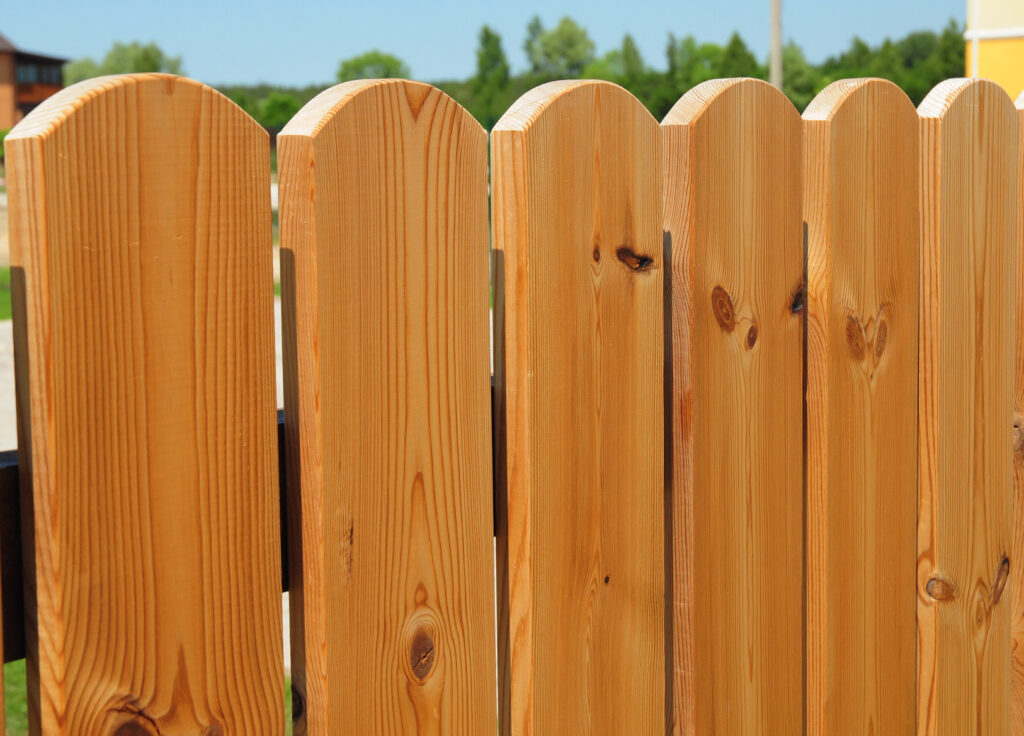
Choosing the Appropriate Size and Shape
Factors to Consider
When choosing the size and shape of a fence, there are several factors to consider:
Property Size
The size of your property plays a significant role in determining the appropriate size of the fence. Consider the perimeter length and the available space for installation. A larger property may require a longer fence to enclose the entire area effectively.
Desired Level of Enclosure
Evaluate the level of privacy and security you desire. If you prioritize privacy, opt for a taller fence that restricts visibility from the outside. If security is a concern, consider a fence with sturdy materials and a design that discourages unauthorized access.
Aesthetic Appeal
The fence’s size and shape should complement the overall aesthetics of your property. Consider the architectural style, landscaping, and any existing structures. Choose a fence design that enhances the beauty of your outdoor space and blends harmoniously with the surroundings.
Architectural Considerations
When selecting the size and shape of a fence, it is important to consider architectural elements:
Matching the Style of the Property
Make sure the chosen fence design complements the architectural style of your property. For example, a traditional picket fence might be a better fit for a Victorian-style home, while a sleek and modern fence would complement a contemporary design.
Complying with Local Regulations
Before finalizing your size and shape choices, research and comply with local regulations and zoning laws. Some areas may have specific height restrictions or design guidelines for fences. Ensure you obtain any necessary permits before installation.
Here are the 10 most common questions people ask when choosing the appropriate size and shape of a fence:
- How tall should my fence be for privacy?
- Can I install a taller fence on my property, even if it exceeds the local height restrictions?
- Are there any regulations regarding the design or style of a fence in my area?
- How can I determine the length of fence required for my property?
- Does the shape of the fence affect its functionality or stability?
- What are the benefits of a curved fence compared to a straight fence?
- How do I ensure that the fence design matches the architectural style of my property?
- Can I incorporate lighting or other decorative elements into the fence design?
- What are the common materials used for fence posts based on the chosen size and shape?
- Are there any budget implications when choosing the size and shape of a fence?
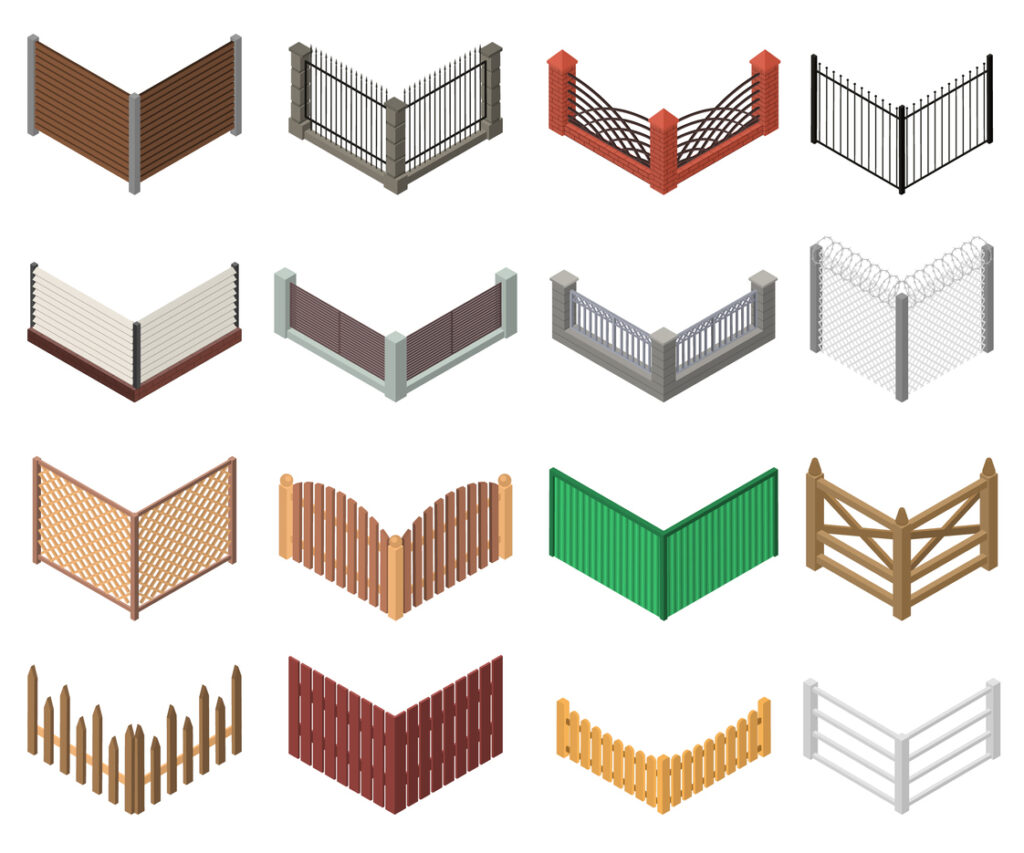
Different Types of Fence Materials
Wood
Wooden fences are a classic and versatile option for any property. They offer natural beauty, warmth, and a wide range of design options. Wood can be stained or painted to match your aesthetic preferences. However, wood requires regular maintenance to ensure its longevity and appearance.
Chain-Link
Chain-link fences are a popular choice for their affordability, durability, and security. They are low maintenance and allow visibility through the diamond-patterned wire mesh. Chain-link fences are commonly used in residential, commercial, and industrial settings.
Vinyl
Vinyl fences have gained popularity in recent years for their durability, low maintenance requirements, and aesthetic appeal. They are available in various styles and colors, allowing customization to match the desired look. Vinyl fences are resistant to rotting, fading, and discoloration.
Metal
Metal fences, such as aluminum and wrought iron, offer strength, elegance, and security. They are highly durable and require minimal maintenance. Metal fences can be customized with ornamental designs to add a decorative element to your property. However, some metals may be prone to rusting.
Here are the 10 most common questions people ask about different fence materials:
- What is the most durable fence material?
- How do different fence materials withstand weather elements?
- Are all fence materials equally suited for privacy purposes?
- Which fence material requires the least maintenance?
- Can I install a gate with any fence material?
- What are the differences in cost among different fence materials?
- Are there any eco-friendly options for fence materials?
- Can I install different types of fence materials together on my property?
- How do different fence materials affect the property’s resale value?
- Can I paint or stain different fence materials to match my house color?
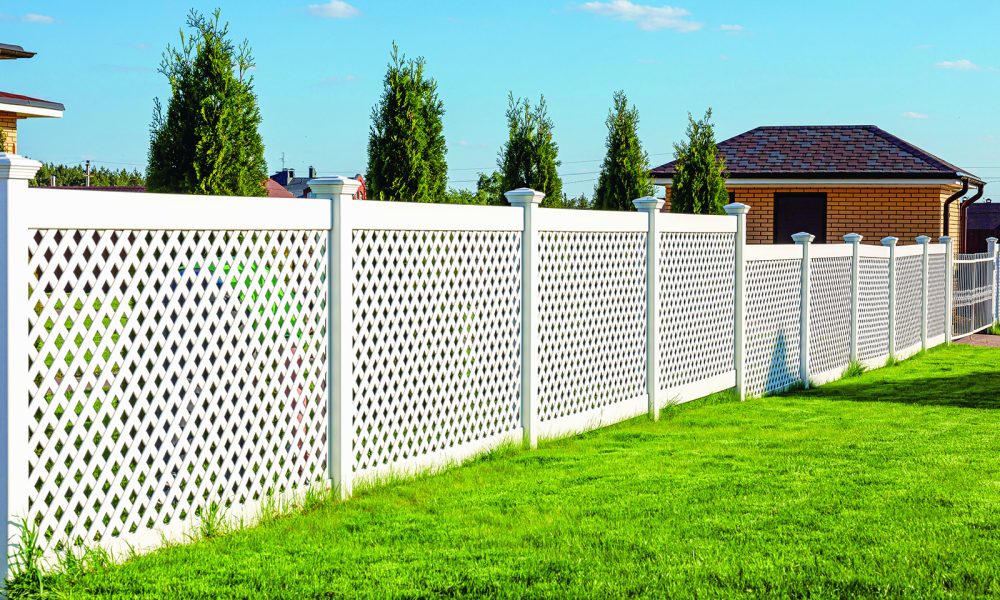
Suitability of Fence Types for Specific Purposes
Privacy Enhancement
Wooden fences and vinyl fences are often top choices for privacy enhancement. Both materials offer options for taller fence heights and solid construction. However, vinyl fences require less maintenance and are less prone to warping or rotting over time.
Security Assurance
When it comes to security, metal fences, specifically wrought iron or aluminum, are excellent choices. Metal fences offer robustness, durability, and can be designed with additional security features like pointed finials or locked gates.
Backyard Enclosure
For backyard enclosure, any of the mentioned fence types can work depending on personal preferences. Wooden fences offer a natural and rustic look, while vinyl fences provide low maintenance options. Chain-link fences are a cost-effective solution, and metal fences offer elegance and security.
Decorative Elements
If you want to add decorative elements to your property, consider metal fences or vinyl fences with ornamental designs. Metal fences, such as wrought iron or aluminum, offer various intricate patterns and scrollwork. Vinyl fences can also be customized with decorative accessories, such as post caps or lattice panels.
Here are the 10 most common questions people ask about the suitability of fence types for specific purposes:
- Which fence type provides the highest level of privacy?
- Can any fence type deter potential intruders or burglars?
- Are wooden fences or vinyl fences more suitable for noise reduction?
- Can you recommend a fence type for enclosing a swimming pool area?
- What fence type is suitable for a pet containment system?
- Can any fence type withstand extreme weather conditions?
- Are there specific fence types that work well for blocking out road noise?
- Can I add decorative elements to a chain-link fence?
- Which fence type offers the best value for money?
- What fence type is commonly used for commercial properties?

Common Fence Maintenance Practices
Cleaning
Regular cleaning is crucial for all types of fences to maintain their appearance and prevent dirt buildup. Use a mild detergent, water, and a soft brush or cloth to gently clean the surface. Rinse the fence thoroughly after cleaning.
Painting/Staining
Wooden fences often require periodic painting or staining to protect the wood from weather elements, rot, and discoloration. Follow the manufacturer’s instructions for paint or stain selection and application.
Repairing Damages
Inspect your fence regularly for any damages, such as loose boards, rust spots, or cracks. Replace or repair damaged components promptly to prevent further deterioration.
Here are the 10 most common questions people ask about common fence maintenance practices:
- How often should I clean my fence?
- Can I use a pressure washer to clean my fence?
- Is it necessary to paint or stain a vinyl fence?
- How can I remove rust spots from a metal fence?
- Are there any specific cleaners recommended for each fence material?
- How do I know if my fence needs repair?
- Can I repair a wooden fence myself, or should I hire a professional?
- Can a damaged vinyl fence section be replaced without affecting the entire fence?
- Are there any recommended sealants for wooden fences?
- What should I do if my fence is infested with pests?
In conclusion, understanding the maintenance requirements of different fence types is essential for their longevity and aesthetic appeal. Wooden fences require cleaning, painting/staining, and prompt repairs to prevent rot and damage. Chain-link fences need regular cleaning and repairs to maintain their durability. Vinyl fences have minimal maintenance needs but require occasional cleaning and repairs. Metal fences, such as aluminum or wrought iron, require cleaning, paint touch-ups, and lubrication for smooth operation.
When choosing the appropriate size and shape of a fence, factors such as property size, desired level of enclosure, and architectural considerations should be considered. Additionally, different fence materials, including wood, chain-link, vinyl, and metal, offer various benefits and maintenance requirements. Each fence type may be suitable for specific purposes such as privacy enhancement, security assurance, backyard enclosure, or decorative elements.
By conducting thorough research and understanding the specific needs and preferences of your property, you can select the most suitable fence type, size, and shape. Regular maintenance practices like cleaning, painting/staining, and repairing damages ensure that your fence remains functional and visually appealing for years to come.
